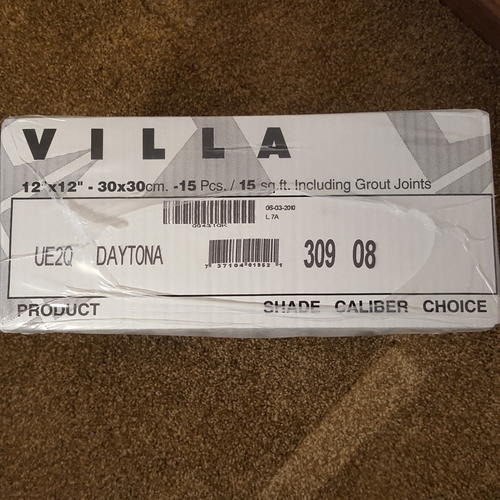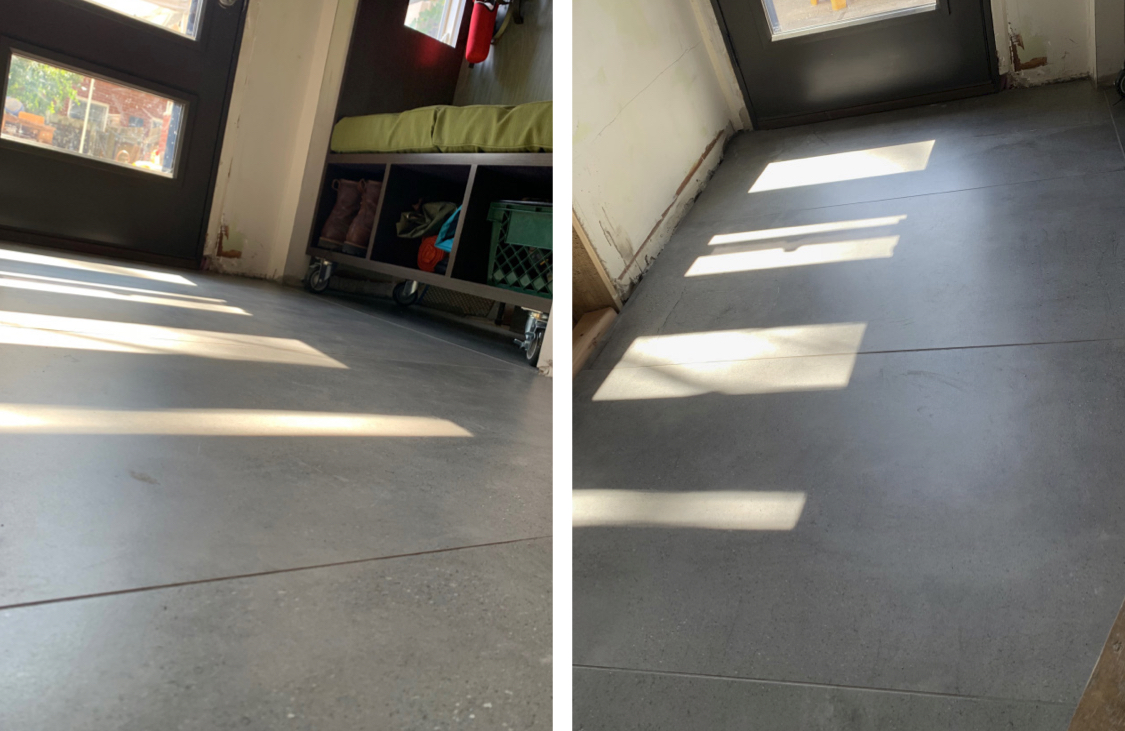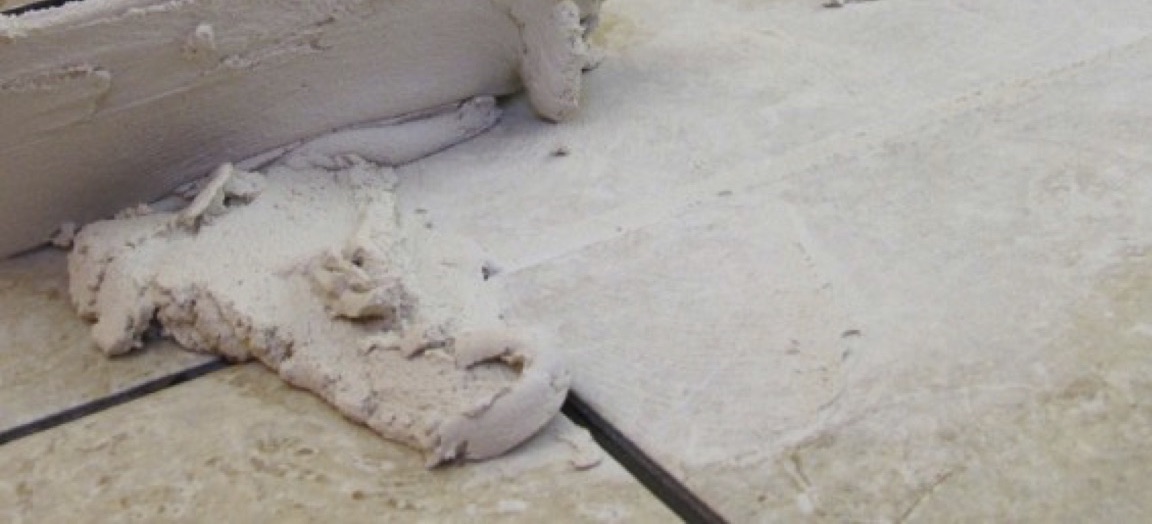There are many factors to consider before selecting an appropriate grout joint width for porcelain and ceramic tiles. Factors that affect proper specification, by way of example but without limitation, include the tile’s dimensional tolerances such as allowable warping and out of square per ANSI A137.1 manufacturing standards, floor flatness, size of the area being tiled, and the presence of movement joints in the subfloor per ANSI A108 installation standards. One also needs to consider exposure to excessive moisture, direct sunlight and temperature swings based on the final use and application. Both vertical and horizontal applications can be affected by all of these factors, which in turn can cause movement and tension in the finished tile assembly.
There is a general misconception that because ANSI A108 sets its minimum recommended joint width limit to 1/16” – and grout manufacturers produce grouts that can be applied as narrow as 1/16” – that the minimum suitable joint width can also be set to 1/16” for all application types. In some applications, like a kitchen backsplash, a narrow joint may be attainable. However, selecting an arbitrary floor grout joint width as narrow as 1/16” for purely aesthetic reasons, or perceived maintenance, can be extremely problematic not just in terms of the tile assembly’s structure, but also may not be attainable across large areas while keeping adjacent rows aligned. There have been great advancements in manufacturing technologies of both cementitious and non-cementitious grouts as well as grout additives over the years, allowing highly stain-resistant properties to prevent, and in some cases eliminate, the age-old struggle with keeping grout joints clean.

It is not only important to understand the intent of industry and manufacturers’ recommendations prior to joint width specification, but also understand the function and necessity of grout in a tile application as a whole prior to selecting a joint width. The role of grout is not only to bond adjacent tiles to one another, but also absorb and disperse some of the tension caused by the expansion and contraction of tiles and substrates. Although grout should not be used as a standalone waterproofing measure, it does display repellent properties, that when compromised in a wet application, can lead to other failures. In other words, if the joint width is not filled properly, maintained properly, or of sufficient width, then failures may be inevitable. As such, butt-jointing techniques should never be used.
ANSI industry standards for tile are written in such a way to account for both manufacturing and installation tolerances to mitigate potential failures and set expectations of what the end result may look like. When going against industry standards and/or manufacturers’ recommendations, failures may include excessive appearance of lippage, cracking, warping, bond failures, water damage and tenting from tension. Provided that the manufacturer and/or distributor that the tiles were purchased from follow ANSI, ISO or other industry standards for manufacturing, then it can be presumed that the tiles supplied will have certain flatness and dimensional tolerances within a particular range. Since these standards allow for facial dimension variations, the joint width needs to properly account for these variances so that grout joint centerlines can remain straight throughout the application and adjacent tile modules don’t touch at any point. The joint width itself may narrow and widen throughout the application to account for facial variations and floor flatness. ANSI A108.02 Section 4.3.8 addresses this by stating the joint width shall be three times the actual variation of the facial dimensions of the tile supplied.


One critical point that is often missed in ANSI A108.02 4.3.8.2 is the additional verbiage that recommends widening the joint of necessity past the standard recommendation to accommodate the specific tile being installed. Without having to measure each tile, it is always best to account for the maximum allowable tolerances whenever possible during specification, which would be approximately 3/16” for pressed porcelain and ceramic tiles and approximately 1/8” for rectified products. This is just a general guide. In some instances the variations in tile dimensions will be minimal, while in other cases they may be riding the maximum tolerance limits or beyond. For example, glazed red-body ceramics are typically developed as a budget-friendly product and may require up to 1/4” joint width depending on the manufacturer’s recommendations instead of the standard recommendation of 3/16” for pressed ceramics due to their inherent size irregularities. With the rise in popularity of long porcelain planks, even though the edges of such tiles may be rectified and the tiles may not have any wedging, the widening of the grout joint width may be necessary to address any inherent warpage that those products tend to display along an edge or diagonal due to their elongated shapes. As such, it may actually be best to install some rectified plank products with a 3/16” joint instead of the generic industry recommendation of 1/8” to help hide any inherent lippage. In other words, due to nuances of manufacturing of certain product types, the manufacturer’s recommendations always prevail over a generic industry guideline to achieve the best end result.
The final layer that provides guidance in proper grout joint width specification is the advancements and availability of leveling clip systems on the market today that help mitigate against the possible negative effects of tile and substrate flatness. Not only is a clip system used as a spacer, but the wedges’ function is to pull tiles from below and simultaneously push tiles down from the top to create a flatter plane in the finished tile install. When potential lippage and floor flatness are being addressed in this manner, a tighter joint may be achieved provided no other jobsite conditions, as previously mentioned, will negatively affect the floor. When opting to go against industry standards or manufacturer recommendations, especially when using a leveling clip system, the specifier and end user must have an understanding, not only of the inherent nature of certain tile product types, but installation tolerances as well. Leveling clip systems are not a final end-all solution to problems related to inherent warpage and joint width spacing, but they do provide an effective measure to mitigate against the negative effects of lippage and challenges in floor flatness.




Paul Makovski
Paul Makovski is the president of Riata Group, an industry consulting firm whose stated mission is to balance function, design, and product transparency in the course of performing the product performance, installation, and sustainability-related services offered. Their services include the preparation of supporting technical documents needed for compliance with industry standards, building codes, and project criteria such as LEED and OSHA requirements.







